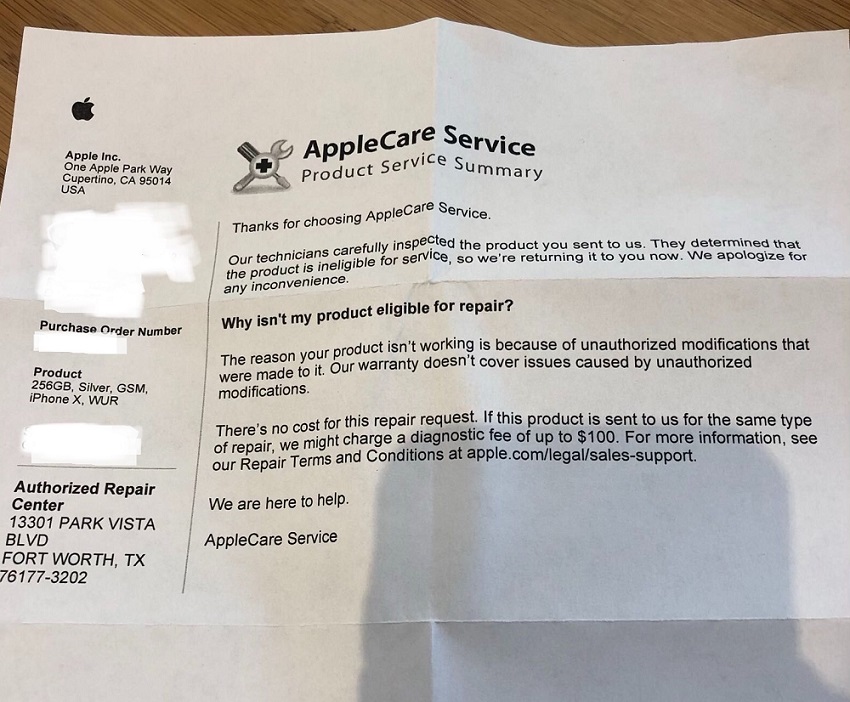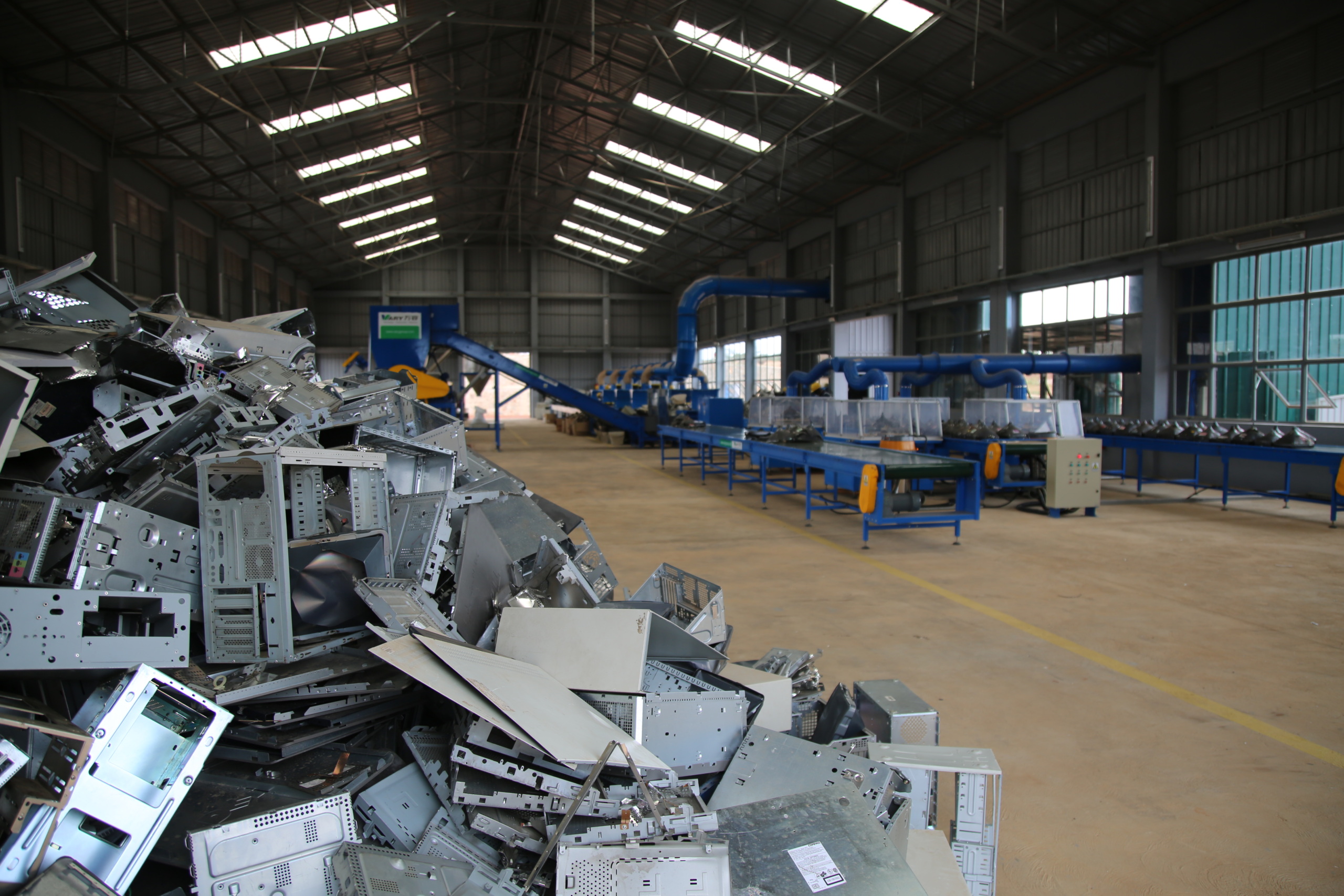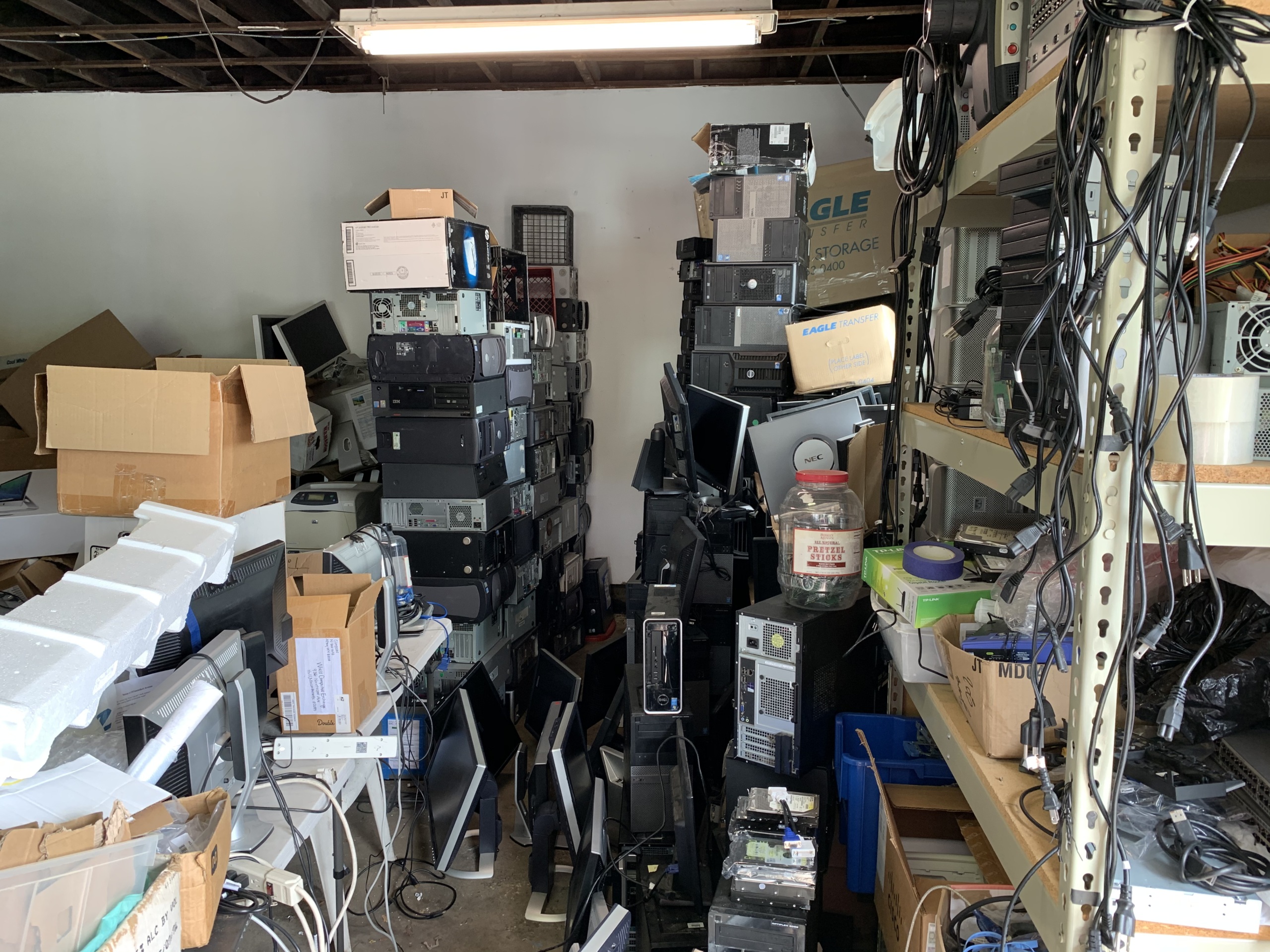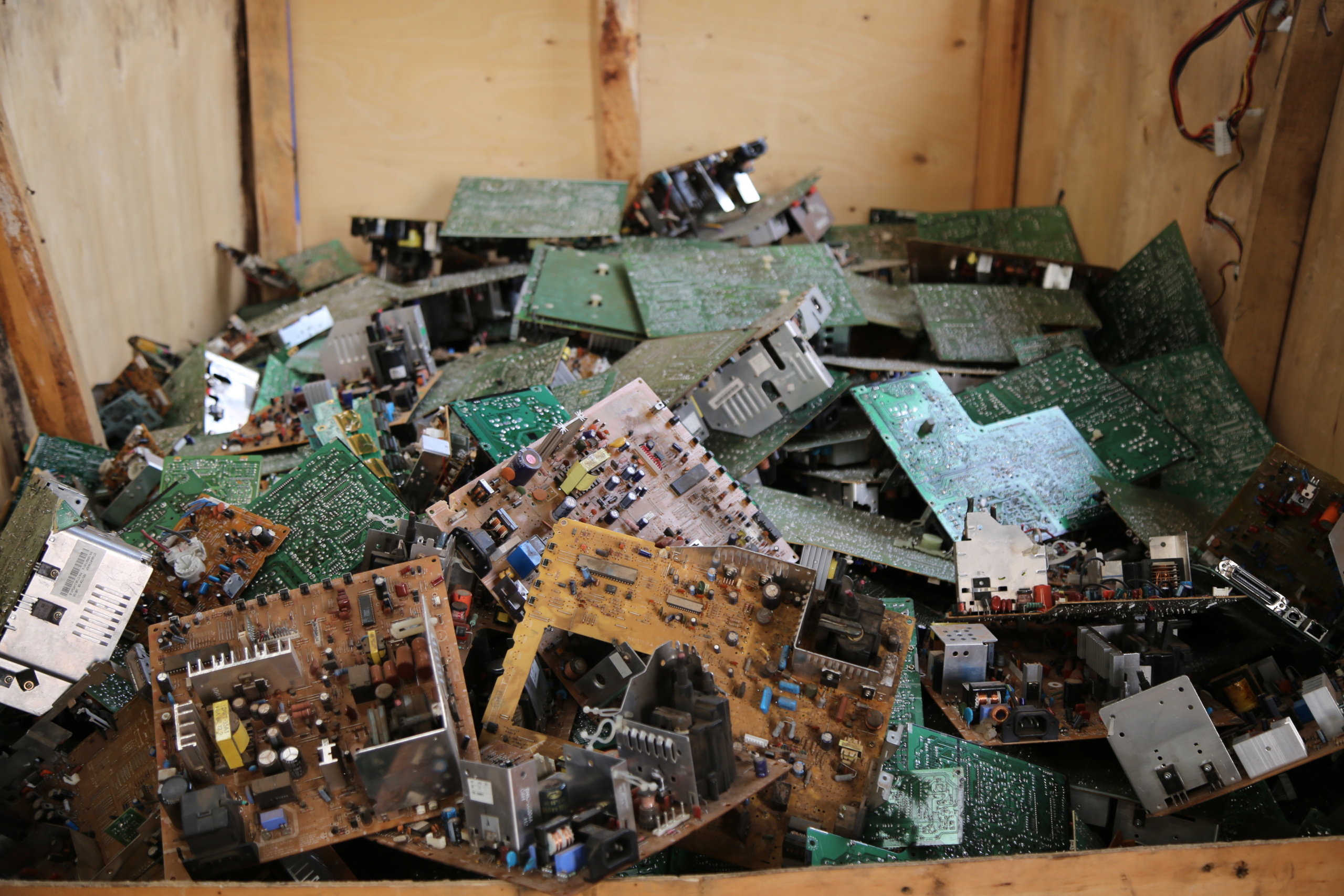
Apple tells Congress that it doesn’t block independent repair. Umm…
Apple responsed to a Congressional inquiry which asked tough question about repair. Their answers underscore why we need the force of Right to Repair reforms in law.
Many of us have felt that moment of panic when we spill some liquid near our electronics. I immediately felt for Daniel when he called into the “On Point” radio show, during a segment in which I was a guest, and shared his story about spilling water on his laptop. Unfortunately, the keyboard and trackpad stopped working.
He recalled that he took his laptop to Apple, where a rep told Daniel they could repair it for only $80. After Apple held on to the computer for a while, Daniel said Apple came back and said they could not fix the computer, because there was water damage, which Daniel already knew.
Daniel said that Apple told him that because of the water damage, the repair would now be $850. He had researched the issue, and thought he could probably do it himself, but said the Apple store “heavily advised me not to open it myself because if I had done that then they weren’t going to be able to help me at all.”
Daniel said he ended up doing the repair himself, and it worked. It cost him $12.
The practice of refusing to fix a customer’s product because of previous repairs — even if those repairs were done without damaging the product — is one of the ways manufacturers try to discourage repair outside of their “authorized” networks.
Other examples include companies requiring software to complete repairs and refusing to make that software available; or stocking spare parts at their own repair locations, but not selling you the spare part to do the repair yourself. These restrictions are what gives rise to Right to Repair — a campaign to require companies to sell spare parts and tools and provide service information to product owners and independent repair shops.
Many people have had an experience like Daniel’s where they felt like they were pushed into buying a new device or paying a huge repair bill — and this practice has attracted attention from our leaders in Washington, D.C.
House Judiciary probes Apple on repair restrictions.
When the only people who have access to the parts, software and instructions necessary for repair are the manufacturers’ authorized shops, those shops become the only options for certain repairs. And when consumers have no options, they have to pay whatever price the manufacturer sets, or get a new device. It’s a kind of monopoly on repair.
The House Judiciary Subcommittee on Antitrust is taking a hard look at Apple, Google, Facebook and Amazon as part of its “Investigation of Competition in Digital Markets.” One of the specific areas of investigation into Apple is how they treat repair. Earlier this fall, the Committee requested documents and Rep. David Cicilline (RI) sent a list of questions for Apple to answer — the answers to which I was eager to see.
Last week, the House Judiciary Committee posted Apple’s response to Rep. Cicilline’s questions. Apple’s comments immediately made headlines (around the world) due to their claim that the company loses money on repairs. But while that particularly difficult-to-believe claim was the focus of the immediate public response, as a Right to Repair advocate, my eyebrows went up at some of the other claims they made in official response to the U.S. Congress.
Apple says they don’t refuse customers with previous repairs. Many people have experienced the opposite.
After Daniel called into On Point, an “authorized Apple service provider,” (AASP) Benjamin, called in, and told this story:
“I’m an Apple service technician at a local authorized provider here in Johnson City, and especially when it comes to Apple stuff, it’s been a real hassle for a lot of people where there’s not an official Apple store within almost 150 miles of us. We get a lot of people who brought their stuff in [saying], ‘I had to have my screen fixed at another store, I had my battery swapped out at so-and-so other retailer,’ and suddenly I have to tell these people, ‘Unfortunately, I can’t work on your device anymore because Apple won’t let me.’
“It’s incredibly frustrating, because a lot of the times it’s just like, ‘Oh, you know, I took it down to my friend who works on this stuff all the time, and all he did was open it.’ Unfortunately, from there, even then, Apple is just like, ‘Oh, hey, if it’s a 6S or newer, they opened it and they can’t put the adhesive back on, we can’t say definitively they didn’t do anything else.’ So it’s going to be a whole new phone replacement.”
Congress asked Apple: “If a customer seeks a repair that an AASP will not make and the customer then seeks that same repair from an unauthorized technician, will Apple refuse repair services to that customer in the future?” (Q. 24).
Apple’s replied “Apple would not refuse repair services to that customer in the future. For example, Apple does not automatically reject service for a device that show attempts by third parties to perform repairs,” (A. 24).
That doesn’t appear to square with what Daniel said he was told, and what Benjamin said he was instructed to tell his customers.
It is possible that this has changed recently, in between when Benjamin called in, and when Apple responded to this request for information.
In March, it was reported that Apple had reversed a policy of automatically denying service to any device which had a non-Apple battery in it. ArsTechnica had reported at the time, “Previously, official service providers were told to deny service to any iPhones that used third-party batteries. It did not matter if the requested service involved the battery or another component of the handset.” (my emphasis).
So this implies that it was Apple’s policy to deny repairs from any device which had a new battery, no matter what was wrong with the phone. Benjamin clearly thought he was not allowed to repair a device that had even been opened by anyone but Apple. Whether or not the device was damaged didn’t seem to matter.
How does Apple claim it “does not automatically reject service for a device that show attempts by third parties to perform repairs?” If the answer is that the company has changed policy, some people clearly haven’t received that message.
A technician told me this story about something that happened in June: A customer came into his independent shop with a phone they had dropped and it stopped charging. The customer previously attempted to have the phone repaired by Apple, but Apple refused, claiming that phone had “unauthorized modifications.” The only thing that was changed on the phone was a new screen, replaced after the customer had cracked the glass.

According to the technician, the problem with phone was very minor, and had absolutely nothing to do with the replacement screen. He says he fixed a “milliamp short” likely caused by the mild drop. Apple’s official policy may be that it will not refuse to service devices, but there are certainly people who experience the opposite.
Denying service due to previous repair is not unique to Apple. I wrote a report last year which found that 45 of 50 appliance manufacturers would deny warranty claims if a customer had the device repaired by an independent technician. Denial on those grounds is generally forbidden under federal warranty laws.
As a customer you shouldn’t have to ask yourself: “If I get this device repaired, will that fact be used as an excuse to deny me manufacturer support later?” Further investigation would help us determine if Apple in fact does refuse repair services in the way that Benjamin and Daniel described, or if this is a practice it has remedied.
In addition to the reports of Apple denying service for repaired devices, the latest iPhones give users “service” warnings if they get their screen or battery repaired outside of Apple’s authorized network. For replacement batteries, they no longer give users information on battery health, limiting the functions of the device.
While these examples are more subtle than “Error 53,” where a software update bricked non-Apple repaired iphones, they still represent measures to discourage independent repair.
Apple offers limited repair options, sidesteps specifics, and adds a new definition of repair.
Last month, Massachusetts legislators heard testimony from a host of witnesses as they considered Right to Repair legislation (you can actually watch the whole hearing here).
They heard story after story about technicians who repair devices that the manufacturer told customers were impossible to repair. Boston technician Adam Fullerton told a story about how his mother-in-law had dropped her phone in water and almost lost all her vacation pictures from a once-in-a-lifetime trip. The manufacturer said the pictures were gone, with no way to recover them. But Adam retrieved the photos.
Vice Magazine recently told the incredible story about how Jessa Jones, noted Right to Repair advocate and expert technician, restored a phone from a murder scene, giving the victim’s family irreplacable memories from the device of a lost loved one. Having independent experts who are willing to do repairs the manufacturer isn’t is valuable to consumers.
Perhaps stories like these are why Rep. Cicilline asked “Does Apple limit the repairs it permits AASPs to make? If so, please provide a full list of the repairs that AASPs are not permitted to make and explain all the reasons Apple does not permit each type of repair.” (Q. 22)
Apple responded by listing the types of repair offered on their devices in the retail stores. For iPhones, that’s only 4 types of repair: Display, Battery, Speaker and Camera (A. 22). Additional repairs are offered through a mail-in service, but Apple does not specify which kind of repairs are done through those services (A. 23).
It’s especially disappointing that Apple refused to describe repairs that they don’t offer through their mail-in service. Repair documentation outside of Apple’s authorized universe is important because apparentlyApple doesn’t train technicians to do a host of repairs. They don’t restore water damaged phones, and remove posts from their forums where other people talk about how such repair services exist. This requires “board level” repair — instead of replacing the entire logic board or motherboard of the phone, you have to use a microscope to fix very small components on the board. Board level repair requires access to repair documentation.
Apple also attempts to create a new category of repair, saying they “offer repair services through refunds or replacements. We currently do not provide same unit repairs for all products…” (A. 22).
Same unit repair? How is it repair if you are replacing the whole unit? Offering a replacement is not different from refusing to repair the device. Some of these devices are designed so that repair efforts will damage the device. But sometimes, Apple just chooses not to perform the other types of repair.
Apple has every right to limit the number of repair options it gives customers in Apple stores. I am not suggesting they be forced to train every one of their technicians to do every type of repair. The problem is that Apple doesn’t allow independent shops to have access to parts and service information to fill in the service gaps.
Apple’s argument against providing repair information and spare parts is actually an argument for providing information and spare parts.
Rep. Cicilline asked Apple, “Why does Apple prevent independent repair stores from accessing many of Apple’s spare parts and repair manuals?” (Q. 17).
Apple responded that its goal is “safe and reliable” repairs, and in order for that to be achieved, it’s important for the technician to follow “proper safety and repair procedures,” and use “genuine Apple parts and tools.” (A. 17).
As I told Vice’s Motherboard, “Apple’s argument is absurd. In defending their decision not to make spare parts or service information available, the company claims that certain parts and information are necessary for a reliable repair. It’s a totally circular argument.”
If there is a safety concern with not having “proper safety and repair procedures,” and “genuine Apple parts and tools,” then the solution is to make those procedures and parts available!
There is a cost to all these repair restrictions.
I’m sure Apple’s answers to Rep. Cicilline would be similar to what other companies would say. Apple is not alone in blocking access to repair — we see similar restrictions across consumer electronics, appliances and even John Deere tractors. In fact, last week, Capt. Elle Ekman, a logistics officer for the United States Marine Corps, wrote an op-ed saying that the military is experiencing issues with manufacturer locks against repair that put troops at risk.
Without repair options, costs go up, and choice goes down.
Meanwhile, electronic waste is the fastest growing part of our waste stream. The most effective way to reduce waste is to produce fewer electronics, which starts with using what we have already made for as long as we can.
We shouldn’t be surprised that manufacturers across the economy are working to monopolize repair services. In recent years, they’ve been allowed to do so, and if they determine it’s in the interest of their company, they will continue to do so.
If we want the ability to choose for ourselves what gets fixed and by whom, we need the force of law. Chances are pretty good that if you are reading this, your state has some pending Right to Repair legislation — and if it doesn’t, you could be the reason it gets introduced. Take action here, and together we can start fixing our stuff — whether Apple wants us to or not
Topics
Authors
Nathan Proctor
Senior Director, Campaign for the Right to Repair, PIRG
Nathan leads U.S. PIRG’s Right to Repair campaign, working to pass legislation that will prevent companies from blocking consumers’ ability to fix their own electronics. Nathan lives in Arlington, Massachusetts, with his wife and two children.
Find Out More

Why Microsoft extended Windows 10 support for schools for $1

Why do we toss working devices?

6 surprising facts from the UN’s 2024 electronic waste report


